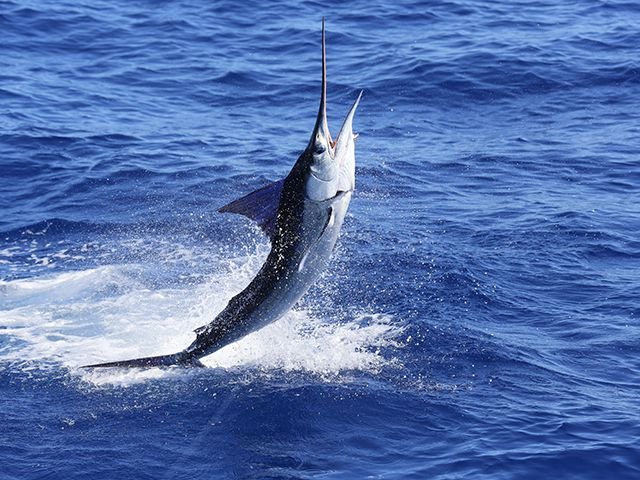Striped Marlin Satellite Tagging: Stage 2
2005
Funding: $85,000
(including support from Massey University and Stanford University)
Researchers: Massey University, Stanford University, Blue Water Marine Research
Popup Satellite Archival Transmitting tags deployed on striped marlin in 2003 provided detailed temperature and depth information but the locations calculated from day length and time at noon were approximate at best. A tag with its aerial exposed to the air for 5 or 10 minutes was needed to get an accurate location from the ARGOS satellite (GPS was too bulky and power hungry at that time). To track the detailed movement of striped marlin in New Zealand waters a second tag was mounted near the top of the tail. This tag, termed a “Smart Position or Temperature“ tag, or SPOT tag transmits messages to satellites when the fish is tailing and the aerial is exposed to the air. The tag location is calculated from several consecutive transmissions received.
The data returned from these SPOT tags on the tail is a world first for any boney fish species (ie. non-shark) anywhere in the world! Researchers have been trying to solve the problems of SPOT tag attachment to billfish for a while and these data represent the first successful SPOT tag transmissions from billfish anywhere.
Three of the four fish carrying SPOT tags settled down after a few days and transmissions were received when the fish tailed on the surface. A total of 116 high resolution striped marlin locations were recorded spanning a total of 52 days for the 3 fish combined. These fish were also tagged with PAT tags programmed to provide the highest resolution data they are capable of transmitting. A total of 114 days of striped marlin data were collected. Three of the 4 fish tagged in the Bay of Plenty in 2005 moved northeast along the Colville Ridge. These results were proof of concept for the attachment and transmission from tail mounted satellite tags. The longest period of transmission was 25 days (average 14 days) so more work was required to get better attachment and longer tracks.
Further research:
There was international interest in the new information that could be gained from accurate tracking of marlin movements. Improvements in tag attachment and a larger sample size were required to provide high quality research results. A follow on project was approved.

